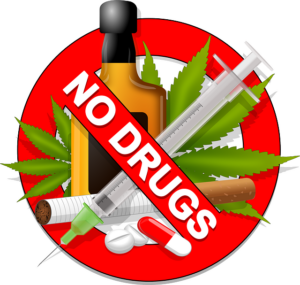Workplace drug testing is an essential component of many corporate health and safety strategies. It ensures a productive work environment, reduces risks, and promotes employee well-being. Lets discuss the top 10 ways that workplace drug testing can benefit a business.

1. Enhancing Workplace Safety
Workplace drug testing is an essential component of many corporate health and safety strategies. It ensures a productive work environment, reduces risks, and promotes employee well-being. Let’s discuss the top 10 benefits of workplace drug testing and how it can improve a business.
One of the most critical benefits of workplace drug testing is the promotion of safety. Employees under the influence of drugs or alcohol are more likely to cause workplace accidents, putting themselves and their coworkers at risk. According to the National Institute for Occupational Safety and Health (NIOSH), substance abuse contributes to increased rates of workplace injuries and fatalities¹.
Industries such as construction, transportation, and manufacturing, where heavy machinery and hazardous materials are common, particularly benefit from strict drug testing protocols. By identifying and addressing substance abuse early, employers can prevent accidents, reduce liability, and save lives.
2. Improving Productivity and Performance
Substance abuse can severely affect an employee’s cognitive and physical performance. It leads to:
- Decreased concentration
- Slower reaction times
- Poor decision-making skills
- Increased absenteeism
A study by the U.S. Department of Labor found that employees who abuse drugs are 2.5 times more likely to be absent from work for eight or more days annually². Regular drug testing helps identify these issues early, enabling timely interventions that can improve overall productivity.
3. Reducing Absenteeism and Turnover
Substance abuse often leads to higher rates of absenteeism and employee turnover. This results in increased costs for recruitment, training, and lost productivity. Research from the National Safety Council (NSC) indicates that organizations with drug-free workplace programs report lower absenteeism rates and reduced employee turnover³.
By implementing workplace drug testing, companies can foster a more stable workforce, reducing the costs and disruptions associated with frequent hiring and training.
4. Lowering Healthcare and Insurance Costs
Employees struggling with substance abuse are more likely to require medical care due to both direct health issues and accidents related to impairment. This increases healthcare costs for employers, especially those providing health insurance.
A report from the National Council on Alcoholism and Drug Dependence (NCADD) suggests that drug-free workplace programs, including drug testing, can significantly reduce health-related costs⁴. Insurance companies may also offer premium reductions for businesses with robust drug-testing policies, further lowering costs.
5. Legal Compliance and Risk Mitigation
In many industries, drug testing is not just beneficial—it’s legally required. Sectors like transportation, aviation, and federal contracting must adhere to strict drug testing guidelines to comply with government regulations. For example, the Department of Transportation (DOT) mandates regular drug testing for safety-sensitive positions⁵.
Even in industries where it’s not mandatory, drug testing can protect companies from legal liabilities. If an accident occurs and an employee under the influence is involved, businesses without a drug-free policy may face lawsuits or regulatory fines.
6. Fostering a Culture of Accountability and Responsibility
Workplace drug testing sends a clear message that safety, health, and accountability are company priorities. It promotes a culture where employees understand the importance of personal responsibility and professional behavior.
When employees know that drug testing is part of company policy, they are less likely to engage in risky behaviors. This proactive approach not only deters substance abuse but also encourages employees to seek help if they are struggling with addiction.
7. Early Detection and Support for Employees
Drug testing isn’t solely about punishment; it also offers an opportunity to identify employees who may need support. Early detection allows employers to:
- Provide access to Employee Assistance Programs (EAPs)
- Offer counseling or rehabilitation services
- Create recovery-friendly workplaces
According to the Substance Abuse and Mental Health Services Administration (SAMHSA), employees who receive support for substance abuse issues are more likely to recover and become productive members of the workforce⁶.
8. Protecting Company Reputation
A company’s reputation is one of its most valuable assets. Incidents involving employee substance abuse can damage public perception, affect client relationships, and harm business partnerships. Implementing workplace drug testing helps mitigate these risks by ensuring a professional and reliable workforce.
Companies known for maintaining high safety and ethical standards are more attractive to investors, clients, and top talent. A drug-free workplace policy can be a competitive advantage, especially in industries where trust and credibility are paramount.
9. Financial Benefits of Workplace Drug Testing
While implementing drug testing programs has costs, the financial benefits often outweigh the expenses. Consider the following savings:
- Reduced workplace accidents: Lower workers’ compensation claims and legal fees
- Improved productivity: Higher output and efficiency
- Decreased absenteeism: Fewer disruptions and overtime costs to cover absent workers
- Lower healthcare costs: Fewer medical claims related to substance abuse
A study by the U.S. Department of Health and Human Services found that for every dollar invested in drug testing programs, businesses can save up to $4 to $7 in productivity and healthcare-related costs⁷.
10. Supporting Broader Public Health and Safety Goals
Workplace drug testing contributes to public health and safety beyond the office walls. For example, in the transportation sector, drug-free policies help prevent impaired driving, reducing the risk of accidents on public roads.
Additionally, drug testing programs can help reduce the overall prevalence of substance abuse in communities. By discouraging drug use and encouraging treatment, businesses play an active role in addressing public health issues related to addiction.
Conclusion
The benefits of workplace drug testing goes beyond identifying users of illicit substances. It also enhances safety, improves productivity, reduces absenteeism, lowers healthcare costs, and fosters a culture of accountability. Moreover, it supports employees who may need help, protects a company’s reputation, and contributes to public health and safety.
While every organization’s needs may differ, the evidence is clear: implementing a comprehensive drug testing program is a smart investment in the health, safety, and success of both employees and businesses.
References
1.National Institute for Occupational Safety and Health (NIOSH). (2022). Workplace Safety and Health Topics. Retrieved from https://www.cdc.gov/niosh/topics/default.html
2.U.S. Department of Labor. (2022). Preventing Substance Use in the Workforce. Retrieved from https://www.dol.gov/agencies/eta/RRW-hub/Getting-started/Preventing-substance-use
3.National Safety Council (NSC). (2021). Substance Use in the Workplace: A Critical Concern. Retrieved from https://www.nsc.org/work-safety/safety-topics/drugs-at-work
4.National Council on Alcoholism and Drug Dependence (NCADD). (2022). Drug-Free Workplace Programs: Cost Benefits. Retrieved from https://www.ncadd.org/about-addiction/addiction-update/drug-free-workplace-programs
5.U.S. Department of Transportation (DOT). (2021). Drug and Alcohol Testing Regulations. Retrieved from https://www.transportation.gov/odapc
6.Substance Abuse and Mental Health Services Administration (SAMHSA). (2022). Recovery-Ready Workplace Resource Hub. Retrieved from https://www.dol.gov/agencies/eta/RRW-hub
7.U.S. Department of Health and Human Services (HHS). (2022). Workplace Drug Testing: Economic Benefits. Retrieved from https://www.hhs.gov/opioids/prevention/workplace-partnerships










